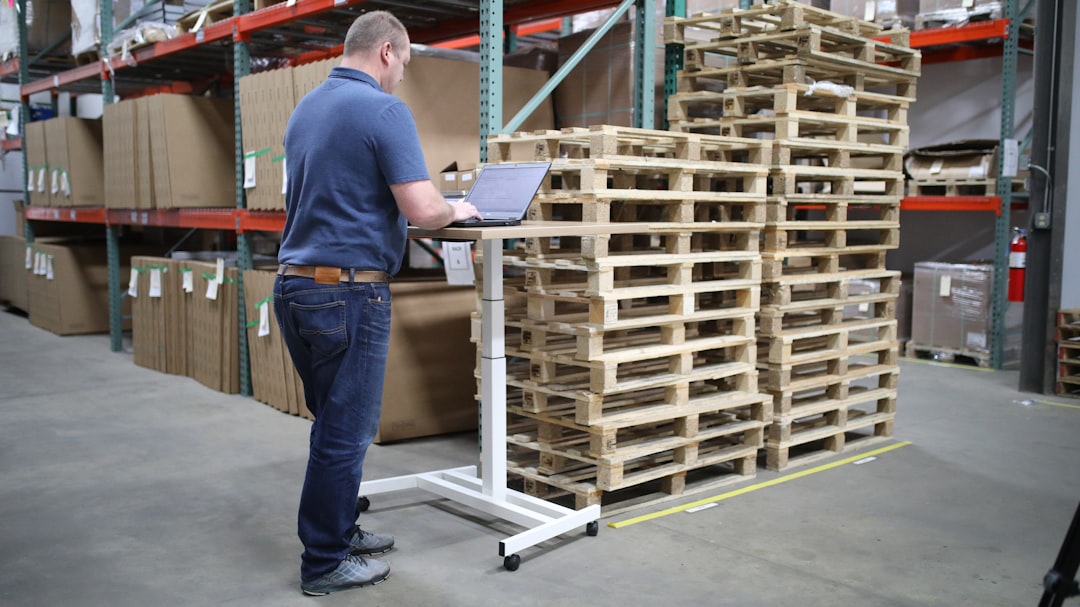

Engage prospects with a scan and streamline customer engagement with FREE QR code marketing tools by Sona – no strings attached!
Create a Free QR CodeFree consultation

No commitment

Engage prospects with a scan and streamline customer engagement with FREE QR code marketing tools by Sona – no strings attached!
Create a Free QR CodeFree consultation

No commitment
In today’s digitally driven world, QR codes in marketing have evolved from a novelty to a strategic powerhouse in bridging offline engagement with online action. For cardboard manufacturers, QR codes represent a frictionless and highly effective tool for enhancing customer experience and driving measurable business outcomes across the supply chain.
The cardboard manufacturing industry faces real challenges: rising demand for sustainable packaging, increased competition for B2B contracts, pressure for personalization, and a need for smarter, traceable logistics. Often, manufacturers struggle with incomplete visibility into who interacts with their packaging and whether high-value prospective clients are lost to anonymous traffic or inefficient manual processes. Integrating QR codes onto custom cardboard boxes or eco-friendly product packaging not only enables innovative customer engagement but also addresses missed touchpoints, allowing for authentication, streamlined reordering, and rich digital interaction.
This article explores how cardboard manufacturers can leverage QR code technology to overcome common gaps in visibility, drive higher-value engagement, and position themselves as leaders in the transition to smart, sustainable packaging solutions.

Many cardboard manufacturers waste resources printing manuals, order forms, or customer support materials that often go unused or unnoticed. QR codes convert these static, costly materials into living entry points that deliver the right resource at the right moment, all while producing measurable engagement data. When a buyer, warehouse lead, or sustainability officer scans, you capture a signal that was previously invisible.
Additionally, when clients do not submit forms or register, valuable relationship-building signals are missed, complicating efforts to drive reorders or follow-ups. Replacing analog processes with QR-powered experiences shortens the path from interest to action. Teams can route scans to reordering portals, digital documentation, and instant support while tracking who engaged, what they needed, and what to do next.

Manufacturers often discover that despite investing in sales and marketing, crucial prospect activity remains invisible, particularly when potential customers interact with physical packaging but do not identify themselves. This leads to missed opportunities, inefficient targeting, and a lack of clarity about which clients are most engaged. QR codes transform these anonymous interactions into actionable data by connecting every box, label, or insert to a measurable digital journey.
Cardboard manufacturers work across long buying cycles, distributed buyer committees, and highly operational environments. In this context, anything that reduces friction and makes activity traceable yields significant gains. QR codes let you update content after printing, capture intent signals at the point of use, and unify fragmented touchpoints within your CRM and marketing automation tools.
Applied to common cardboard manufacturer materials, QR codes upgrade product cartons, pallet labels, and invoices into real-time service tools. For example, a QR on a shipping label can confirm delivery and request feedback. A QR on a carton can authenticate a batch and link to a reorder portal. The result is measurable engagement where previously there was none.

A frequent frustration in cardboard manufacturing is juggling multiple types of customer engagement, such as manual forms, brochures, and phone hotlines, without a unified data trail. QR code formats offer flexible, consolidated ways to address different client needs while keeping analytics in a single system. By selecting the right QR type for each use case, you ensure a smoother experience and more reliable data capture.
In practice, your buyers and operations contacts want fast access to documentation, reorder options, and support. The formats below map to those priorities and are straightforward to deploy on boxes, inserts, labels, and sales collateral.
Managing these formats in a centralized way helps prevent campaigns from becoming fragmented or disconnected. A platform like Sona QR allows you to create each format, assign it to a destination, update it dynamically, and track performance across all placements.

Even committed cardboard manufacturers sometimes overlook high-impact moments when clients are ready to engage or reorder because physical and digital channels are not connected. QR codes make those moments measurable and actionable, turning everyday touchpoints into opportunities for expansion, retention, and service excellence. See community ideas for packaging QR inspiration.
Focus on placements where buyers already look for information or where staff handle your packaging regularly. Doing so improves scan rates and data quality, and it helps sales prioritize follow-up with real intent signals rather than assumptions.
By prioritizing placements with the highest on-site visibility, you can increase scan rates and lower acquisition costs. Over time, analytics will reveal which placements reliably convert scans into reorders or conversations, guiding better printing and packaging decisions.

A common pain point for manufacturers is failing to detect when a high-value client is ready to reorder or engage deeper because traditional tracking systems miss offline signals. QR codes make it easy to capture that intent at the moment it occurs, whether on a shop floor, at a distribution center, or during unboxing at a retail site. These use cases align with top business goals: retaining contracts, improving service quality, and expanding account value.
Beyond the examples below, consider layering QR codes across the product lifecycle. A code on an RSC carton might drive to recycling instructions, while a code on a master case might trigger a reorder. Each scan tells you who is engaging and why, helping you personalize outreach.
Each use case turns a passive touchpoint into a measurable conversion or retention opportunity. When integrated with CRM and service tools, scans can create tickets, trigger reorder reminders, or score accounts for sales outreach.
A critical, often-overlooked challenge in lead generation is that many valuable prospects interact with packaging or collateral without becoming a known contact in the CRM. QR code scans change that by providing intent-rich signals that marketers and sales teams can use to create segments and automate follow-up. This reduces waste and ensures your team focuses on buyers who are actually engaging. Explore Sona QR use cases to plan segments.
In the cardboard manufacturing context, scans can distinguish procurement managers browsing bulk pricing from operations teams seeking technical documentation or sustainability officers checking certifications. When your codes are unique to each touchpoint, segmentation happens automatically and can be synced to your CRM and ad platforms. Ground this with Sona intent data concepts.
This approach produces better targeting and more meaningful nurture programs. For instance, repeat scans on a reorder portal can trigger a direct call from account management, while one-time scans on recycling content can feed a sustainability newsletter for ongoing education.
Disconnected campaigns and siloed messaging create inconsistent experiences and unmeasurable spend. QR codes link your offline brand presence to your digital ecosystem, enabling real-time engagement and analytics across every channel. With consistent calls to action and dynamic destinations, you can make print budgets accountable and events more productive.
For cardboard manufacturers with long sales cycles, a connected journey is essential. Prospects might meet you at a trade show, grab a spec sheet, and later handle your packaging in a warehouse. QR codes align those moments into a coherent narrative, moving people from awareness to consideration to conversion while producing data you can rely on.
QR codes act as the offline onramp to your digital marketing engine. A centralized platform like Sona QR lets you manage codes at scale, monitor performance in real time, and sync scan activity to your CRM and ad platforms for coordinated follow-up.
Manufacturers often struggle with campaign execution because analog processes hide which ideas create value and where engagement drops off. A simple framework helps you pilot, measure, and scale QR initiatives with confidence, without overcomplicating design or deployment.
Use the steps below to define the business outcome, select the right QR format, and optimize quickly. Each step includes practical considerations for cardboard manufacturing teams that work across production, logistics, sales, and sustainability functions.
Start with a clear business goal that you can measure, such as reducing reorder lag, increasing recycling compliance, or shortening support resolution time. Select one high-visibility placement for a pilot, for example, the inside flap of B2B shipping cartons or the front page of your printed catalog. Keep scope tight for fast learning.
Examples include one-tap reordering for bulk customers via on-box QR codes, authenticated product verification for regulated industries, or a sustainability hub that consolidates certifications and recycling instructions. Define what success looks like, such as a target scan-to-order rate or a reduction in phone support calls.
Choose static codes for simple, fixed destinations like evergreen PDFs. Use dynamic codes when you need to track performance, update links without reprints, or personalize content by audience. For most B2B use cases, dynamic codes offer flexibility and better analytics.
Consider security and privacy. If the destination contains account-specific pricing or order history, route scans through authenticated pages. Dynamic codes can gate access, log events, and prevent link rot over long packaging lifecycles.
Design for scannability first, then brand. Use sufficient contrast, adequate quiet space, and a size that fits the viewing distance. Incorporate your logo, brand colors, and trust signals such as FSC or ISO icons where helpful, but do not compromise readability.
Include a benefit-driven call to action near the code. Phrases like Scan to reorder in 60 seconds or Scan for recycling instructions set expectations and increase scan rates. Test across multiple smartphones, under typical lighting, and at the angles your audience will use. For high-speed corrugated applications, see printing on corrugated.
Roll out your pilot to the channels that B2B buyers use most. Commonly, this means product packaging, shipping documents, and trade event displays. Ensure each placement has its own QR code so you can compare performance and double down on what works.
Coordinate internally so production, logistics, and sales understand the purpose of each code and the desired customer actions. Provide enablement cards or quick scripts so staff can explain the value at handoff or during service calls.
Launch with a measurement plan that covers scan volume, conversion rates, and downstream actions such as orders placed or support tickets closed. Review performance by placement and audience segment. Identify drop-off points and test improvements such as revised CTAs, different landing pages, or adjusted code sizing.
Use your platform’s analytics to route insights back to marketing and sales. If pallet label scans spike from a specific region, alert the territory rep. If sustainability content draws recurring scans from a key account, plan an executive briefing with ESG stakeholders.
A persistent pain point for manufacturers is the inability to link physical interactions with business outcomes like leads, upsells, or renewals. QR codes solve this by creating a measurable trail from scan to action to revenue. You can see which cartons, labels, or inserts prompted engagement, and you can attribute the subsequent conversion to a specific campaign or packaging run.
Granular analytics improve decision making. If scans from invoices correlate with faster payments, expand that placement. If reordering scans from certain product lines consistently convert, prioritize those SKUs in your next campaign. Over time, these insights lead to more efficient printing runs and more effective sales outreach, sharpening your pipeline impact.
With Sona QR and Sona, an AI-powered marketing platform that turns first-party data into revenue through automated attribution, data activation, and workflow orchestration, teams can capture detailed scan data in real time, unify it with website visits and email engagement, and sync it to Salesforce or HubSpot. Identity resolution and multi-touch models help you understand how QR interactions contribute to pipeline and closed revenue, and Sona’s account identification gives sales the context to act quickly.
Sustained value from QR code initiatives requires discipline, iteration, and cross-functional alignment. Many manufacturers falter when codes are deployed generically, CTAs are vague, or analytics are not tied to business outcomes. A few best practices go a long way toward maintaining momentum and proving ROI.
As programs scale, look for ways to personalize by segment, automate follow-up, and improve creative. Update destinations as offers change, and continue to test placements and messaging that align with buyer needs in procurement, operations, and sustainability teams.
Creative deployments for this vertical include QR codes printed on die lines for kitting instructions, on pallet wraps for dock scheduling, and on box interiors to educate end customers about recycling. These placements map naturally to common workflows and often outperform generic exterior placements.
QR codes are more than a shortcut for cardboard manufacturers, they are a sustainable strategy for solving real-world visibility, engagement, and revenue challenges. By bridging the data gap between physical packaging and digital action, manufacturers can identify high-value buyers, reduce churn, and deliver measurable value across every account. When every printed surface can route to the right resource at the right time, your packaging becomes a service channel and a growth engine.
By embedding QR technology into everyday workflows, cardboard manufacturers can finally connect offline activity to measurable business outcomes. Teams can capture lost opportunities, personalize interactions, and maximize the value of every packaging run while advancing sustainability goals and meeting modern buyer expectations. With a centralized platform like Sona QR, you can generate and manage dynamic codes, integrate analytics with your CRM, and attribute scans to revenue, all within minutes of getting started. Start creating QR codes for free.
QR codes have transformed the cardboard manufacturing industry from static packaging into interactive, data-driven communication channels. Whether it’s streamlining supply chain transparency, enhancing product traceability, or delivering richer customer insights, QR codes replace manual tracking with instant, mobile-friendly access and capture real-time data to turn every cardboard asset into a powerful tool for operational efficiency and customer engagement. Imagine knowing exactly which shipments are on time, how customers interact with your packaging, and being able to update information instantly without reprinting.
With Sona QR, you can create dynamic, trackable QR codes in seconds, update campaigns or product details on the fly, and connect every scan directly to actionable business intelligence. No wasted effort, no missed opportunities—just smarter, more profitable manufacturing and customer interactions. Start for free with Sona QR today and turn every scan into a step toward greater efficiency and stronger client relationships.
QR codes enhance customer engagement, provide measurable data on packaging interactions, enable instant access to product information, streamline reordering, support sustainability efforts, and improve traceability and authentication.
Manufacturers can add QR codes directly to packaging such as cartons, shipping labels, inserts, and sales collateral, using dynamic QR codes managed through a centralized platform to update content, track scans, and link to digital resources or reordering portals.
QR codes can drive customers to web links, feedback forms, contact cards, app downloads, and Wi-Fi access; they can also be used on product packaging, shipping labels, catalogs, trade show displays, and invoices to capture leads, promote sustainability, and support reorder and authentication processes.
While the article does not list specific manufacturers, it highlights platforms like Sona QR that enable cardboard manufacturers to create, manage, and track QR codes integrated into their packaging products.
QR codes provide instant access to product information, recycling instructions, support and warranty registration, and reordering portals, reducing friction and manual processes while offering personalized, up-to-date content that enhances satisfaction and speeds resolution.
Use Sona QR's trackable codes to improve customer acquisition and engagement today.
Create Your FREE Trackable QR Code in SecondsJoin results-focused teams combining Sona Platform automation with advanced Google Ads strategies to scale lead generation

Connect your existing CRM

Free Account Enrichment

No setup fees
No commitment required

Free consultation

Get a custom Google Ads roadmap for your business






Launch campaigns that generate qualified leads in 30 days or less.
